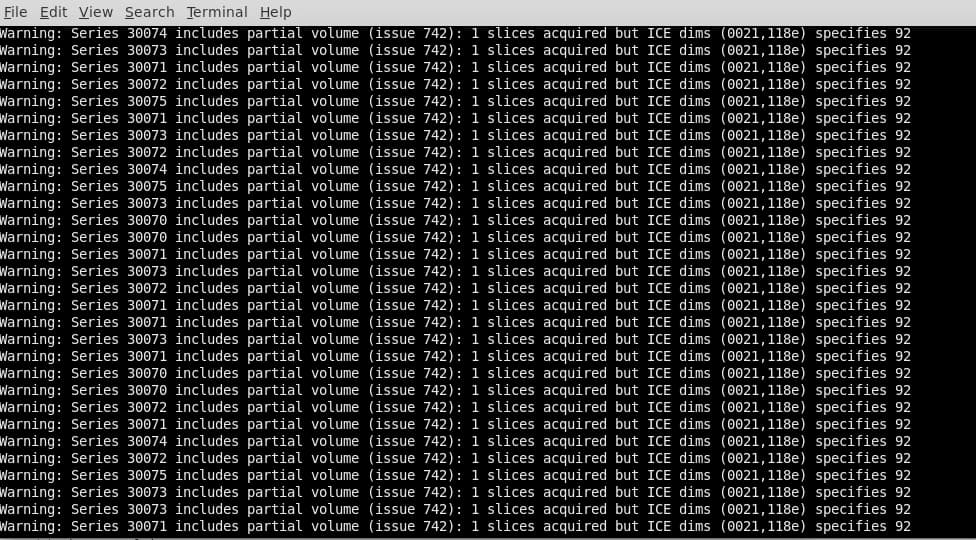Summary of what happened:
dcm2niix incredibly slow to parse DICOM folder, then generates separate output files (per diffusion direction/timepoint) rather than single 4D.
Note: the data were acquired on a Siemens 3T Cima.X according to the HCP/D protocol, using Siemens’ own epse pulse sequence, rather than a CMRR version. I suspect that this defaults to splitting each diffusion weighting into a separate slices!!!.
Command used (and if a helper script was used, a link to the helper script or the command generated):
dcm2niix -f series%s_%p -z y -o ./Converted ./DICOM
Version:
Chris Rorden’s dcm2niiX version v1.0.20240202 GCC12.3.0 x86-64 (64-bit Linux)
Environment (Docker, Singularity / Apptainer, custom installation):
Conda environment
Data formatted according to a validatable standard? Please provide the output of the validator:
Not at that stage yet!
Relevant log outputs (up to 20 lines):
Screenshots / relevant information:
When finished processing I end up with lots of separate nifti files (e.g. one per diff direction) with associated bval bvec files. I’m not sure if there’s an option to have dcm2niix roll these all into one, and generate something I’m more used to handling? Failing that will I just have to fslmerge and concatenate the .bvec/.bval files?
FYI during conversion I see 1000s of these warnings:
